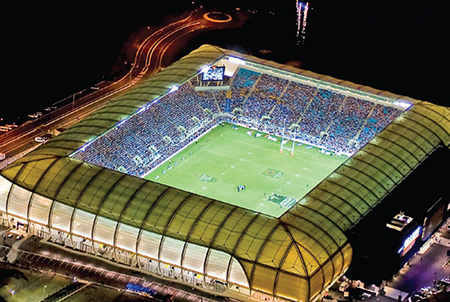NRL Grounds
Despite a trend in recent years of crowd attendances falling while TV audience numbers grow, there is nothing like watching a game of live NRL at one of the league’s various and unique grounds. While the reasons behind falling ground attendances are complex and multifaceted, there is no doubt that seeing the players live, hearing the fans heckle and boo, sitting in the plastic seats, and sampling the exorbitantly overpriced food and drink, well, nothing compares.
From a punting perspective, knowing the ins and outs of each ground can be a real benefit. For example, Canberra’s GIO Stadium is perfect for open, expansive attacking football during the day, often leading to huge scores. However, at night, and especially in winter, the ground becomes dewy, making it harder to get a handle on the ball, often leading to scrappy error-laden football that suits well-drilled teams that play direct.
A fundamental debate between fans of the NRL is what is better; the newer stadiums with better facilities that are easier to get to, or the older, sometimes outdated suburban grounds, which many regard as the spiritual home of rugby league. To condense the argument, it is essentially a debate between progress and tradition, modernity and nostalgia. While there are pros and cons for both the newer stadiums and the older suburban grounds, particularly in Sydney, there has been a shift in attitude in the past few years, with the older suburban grounds coming back into favour.
Nowhere is this point as relevant as with ANZ Stadium, Sydney’s largest and most divisive ground. Constructed for the Sydney Olympics, the stadium is relatively new, has modern facilities, and adequate public transport access for most of Sydney. What’s more is that ANZ Stadium hosts the biggest and most fiercely contested games, including State of Origin and the Grand Final, creating a fantastic atmosphere.
However, the oval shape of the ground is not ideal for watching rugby league, with many seats feeling like a long way from the action. And games that fail to draw a large crowd can make the cavernous stadium feel desolate, creating a terrible atmosphere for the NRL. Also, the fact that ANZ Stadium is shared by five teams for home games means that the ground lacks a distinct character of its own, in direct contrast to the traditional suburban grounds.
What is certain is that every club will be hoping to establish their home ground as a fortress that underpins their tilt at the top eight. Click on the pictures to read a short bio of each ground used in the NRL season, including stats on the respective capacities and home teams.

















